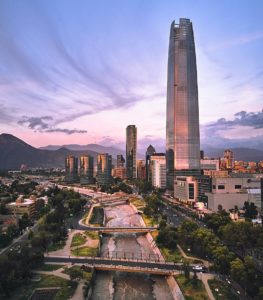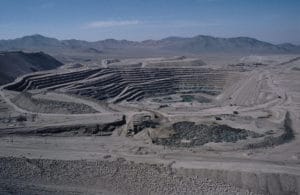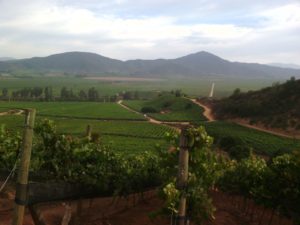
Copper mining makes up 20% of Chilean GDP and 60% of exports. Escondida is the largest copper mine in the world, producing over 5% of global supplies. Overall, Chile produces a third of the world’s copper. Codelco, the state mining firm, competes with private copper mining companies.
Sound economic policies, maintained consistently since the 1980s, have contributed to steady economic growth in Chile and have more than halved poverty rates.
Chile is rich in mineral resources, especially copper and lithium. It is thought that due to the importance of lithium for batteries for electric vehicles and stabilization of electric grids with large proportions of intermittent renewables in the electricity mix, Chile could be strengthened geopolitically. However, this perspective has also been criticised for underestimating the power of economic incentives for expanded production in other parts of the world.

Agriculture in Chile encompasses a wide range of different activities due to its particular geography, climate and geology and human factors. Historically agriculture is one of the bases of Chile’s economy. Some major agriculture products of Chile include grapes, apples, pears, onions, wheat, corn, oats, peaches, garlic, asparagus, beans, beef, poultry, wool, fish, timber and hemp. Due to its geographical isolation and strict customs policies Chile is free from diseases such as Mad Cow Disease, fruit fly and Phylloxera. This, its location in the Southern Hemisphere, which has quite different harvesting times from the Northern Hemisphere, and its wide range of agriculture conditions are considered Chile’s main comparative advantages. However, Chile’s mountainous landscape limits the extent and intensity of agriculture so that arable land corresponds only to 2.62% of the total territory. Chile currently utilizes 14,015 Hectares of agricultural land.

Tourism in Chile has experienced sustained growth over the last few decades. In 2005, tourism grew by 13.6 percent, generating more than 4.5 billion dollars of which 1.5 billion was attributed to foreign tourists. According to the National Service of Tourism (Sernatur), 2 million people a year visit the country. Most of these visitors come from other countries in the American continent, mainly Argentina; followed by a growing number from the United States, Europe, and Brazil with a growing number of Asians from South Korea and PR China.
The main attractions for tourists are places of natural beauty situated in the extreme zones of the country: San Pedro de Atacama, in the north, is very popular with foreign tourists who arrive to admire the Incaic architecture, the altiplano lakes, and the Valley of the Moon. In Putre, also in the north, there is the Chungará Lake, as well as the Parinacota and the Pomerape volcanoes, with altitudes of 6,348 m and 6,282 m, respectively. Throughout the central Andes there are many ski resorts of international repute, including Portillo, Valle Nevado and Termas de Chillán.
The main tourist sites in the south are national parks (the most popular is Conguillío National Park in the Araucanía) and the coastal area around Tirúa and Cañete with the Isla Mocha and the Nahuelbuta National Park, Chiloé Archipelago and Patagonia, which includes Laguna San Rafael National Park, with its many glaciers, and the Torres del Paine National Park. The central port city of Valparaíso, which is World Heritage with its unique architecture, is also popular. Finally, Easter Island in the Pacific Ocean is one of the main Chilean tourist destinations.
